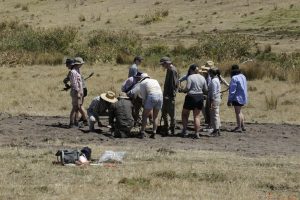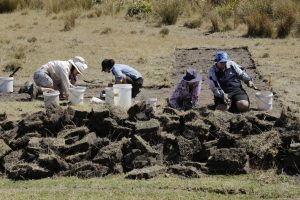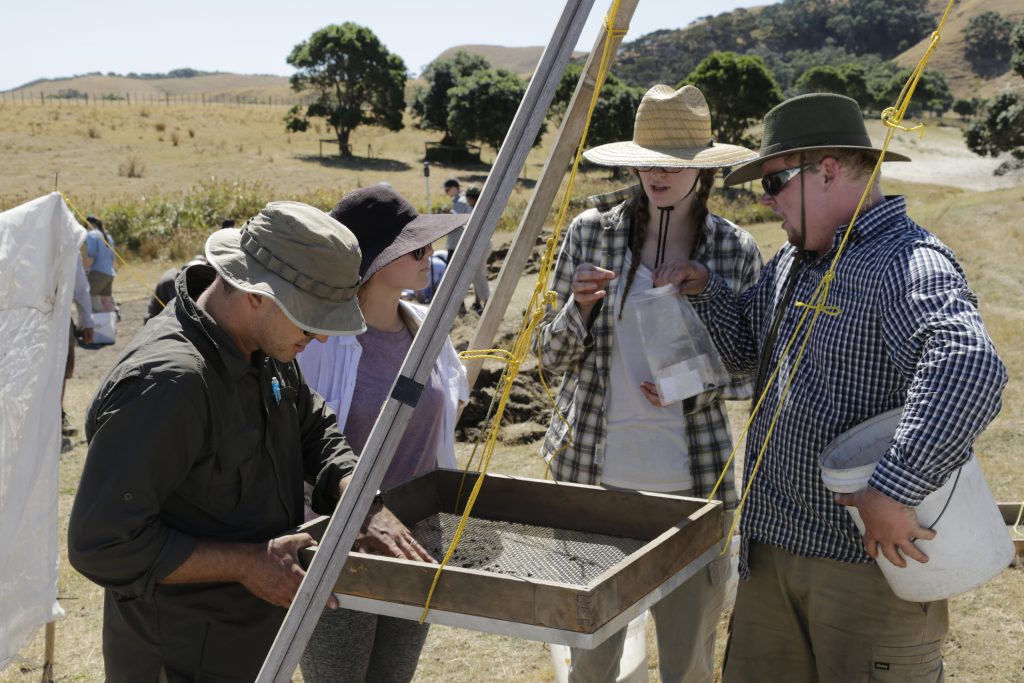In this field season, the 6th fieldschool of the University of Auckland on Ahuahu, we are working again on EA64 in Coralie Bay on the east side of the island. We have excavated on the same site for the last two summers and the results raised questions that we are attempting to answer by excavating a different part of the site.
Previous excavations focused on the top of the ridge where a cooking area was uncovered in the first season, and underneath this an earlier occupation which had stone flakes and moa and dog bones. A large amount of obsidian (volcanic glass) was recovered, and analysis showed many different sources of obsidian are represented. The presence of moa bone indicates, even without radiocarbon dating, that we are dealing with a site from the early end of the sequence of Maori settlement of the island, perhaps from 6-700 years ago. We didn’t understand how the layers were formed and what influenced the deposition so we extended the excavation in 2016.
Similar material was found and we think the wind has played a large part in moving sand around on the ridge while modifying the surfaces people actually lived on. We are interested in whether the adjacent valley, just off the ridge, also contains cultural material associated with the site on the ridge and some test pits placed across this area in June 2016 revealed stone flakes.
One test pit had a posthole in the base, which was all we needed to encourage us into opening up a larger area this summer. It seemed logical to us that the valley was more sheltered from the wind and therefore a more attractive place for residential sites than on the ridge top. We are pursuing the theory that the land in the valley was used as part of the same settlement.
Ahuahu is very dry this summer, and the constant wind is not helping the situation. In the valley we are more sheltered than up on the ridge, where we frequently had to chase hats, plastic bags and paperwork blowing away in strong wind gusts. The downside to no wind is increased heat. Today was the first day of work, where 14 3rd year students who have never taken part in an excavation before were introduced to the early stages of excavation – the grass cover in a defined square area was cut into small squares and removed to expose the sandy layer underneath. Despite the hot sun, and the large area to be deturfed, the students were very cheerful and enthusiastic throughout the process. I think this is going to be a good excavation.
~ Louise





